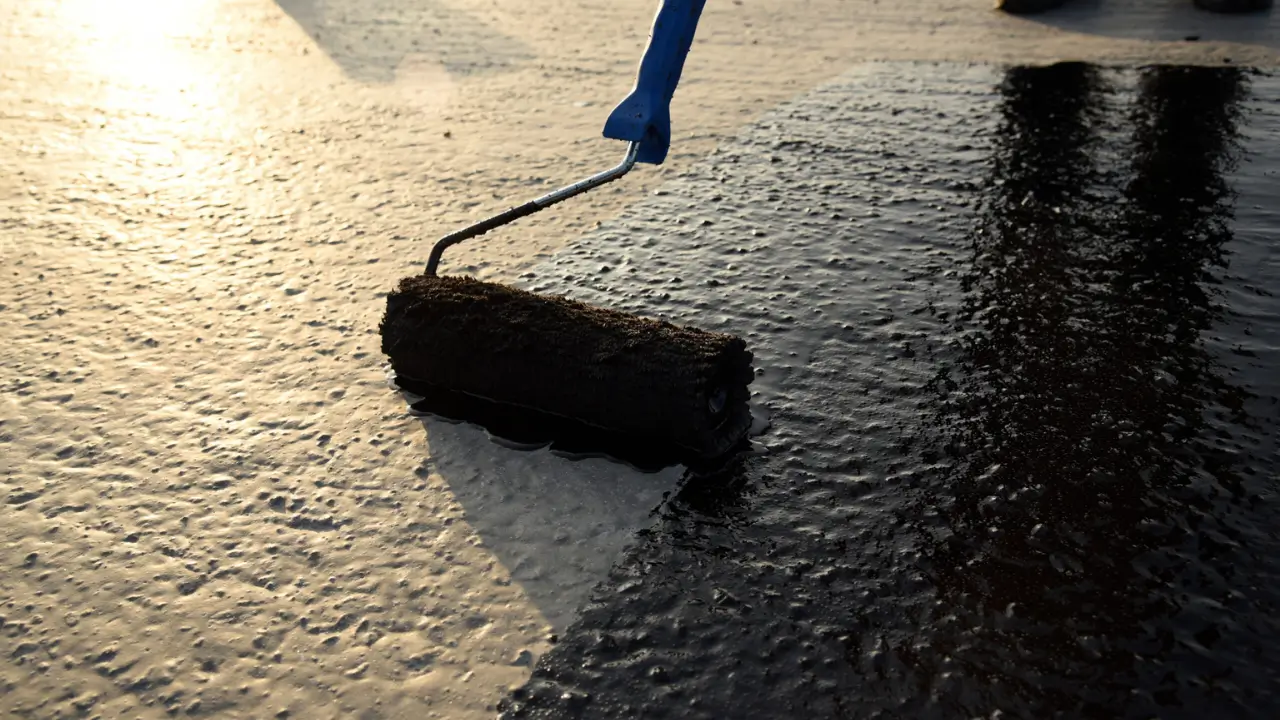
Waterproofing membranes are insulation layers, usually made of flexible and durable materials, used to protect structures from the harmful effects of water. These membranes are applied to different parts of buildings, from foundations to roofs, terraces to balconies, preventing water from seeping in. Waterproofing membranes extend the life of structures, prevent moisture and mold formation and create healthy living spaces.
Membranes, which are among the most preferred waterproofing materials, are produced from different materials and with different techniques. The most commonly used membrane types include bituminous membranes, PVC membranes, EPDM membranes and TPO membranes. Each type of membrane has different properties and advantages. For example, bituminous membranes are economical and easy to apply, while PVC membranes are more durable and long-lasting. Membrane selection is based on the characteristics of the structure, intended use and budget. Correct application of waterproofing membranes is of great importance for the effectiveness of the insulation. Incorrect applications can lead to water leaks and structural problems. Therefore, it is recommended that waterproofing membranes are applied by experts.
What are the Types of Waterproofing Membrane?
Manufactured from different polymers, these membranes have different properties in accordance with various application areas and needs.
Waterproofing membranes are basically divided into two main categories:
Bituminous Membranes:
- It is one of the most widely used membrane types.
- It is produced from petroleum-derived bitumen.
- It has high temperature resistance.
- Easy to implement.
- Produced in different layers and thicknesses.
- Advantages: Economical, durable, easy to apply.
- Disadvantages: Risk of melting at high temperature, some types can be harmful to the environment.
Synthetic Membranes:
- They are produced from different polymers (PVC, EPDM, TPO).
- They are lighter and more flexible.
- High performance and long life.
- They offer different color and pattern options.
- Advantages: High performance, long life, environmentally friendly options, aesthetic appearance.
- Disadvantages They are more expensive than bituminous membranes.
For liquid membrane waterproofing, you can choose insulator and Polymer 100 products. For bitumen-based waterproofing, you can use Bitumer 100 in your projects with peace of mind.
What are the Application Areas of Waterproofing Membrane?
Waterproofing membranes are produced from different materials and have different properties. For this reason, it is important to choose the membrane suitable for the application area and needs. The correct application of waterproofing membranes is critical for the longevity of the structure and protection from the harmful effects of water.
Waterproofing membranes, which have a wide range of applications, are frequently preferred especially in the following areas:
- Roofs Waterproofing membranes are used on roofs to prevent water leaks and protect the structure. It facilitates the flow of water and prevents water accumulation, especially on sloping roofs.
- Foundations The foundations of buildings are susceptible to groundwater and moisture. Waterproofing membranes extend the life of structures by waterproofing foundations.
- Terraces and Balconies: Terraces and balconies are areas where waterproofing is important because they are exposed to the open air. Waterproofing membranes prevent water accumulation and leaks in these areas.
- Bathrooms and Kitchens: Waterproofing membranes prevent moisture and mold growth by preventing water from seeping into walls and floors in areas where water is frequently used, such as bathrooms and kitchens.
- Pools Waterproofing membranes are used to waterproof pools and prevent water losses.
- Tunnels and Bridges: Waterproofing membranes are used in infrastructure projects such as tunnels and bridges to prevent water damage to the structure.
- Water Tanks: Water tanks are used to store drinking water or other liquids. Waterproofing membranes prevent water losses and create a hygienic environment by waterproofing the tanks.
Waterproofing membranes are an indispensable material for the protection of buildings and structures from the harmful effects of water and are used in many different areas, especially in the areas listed above.
How to Apply Waterproofing Membrane?
Waterproofing membrane application varies according to the type of membrane selected and the surface to be applied. However, the following steps are generally followed:
- Surface Preparation: The application surface is cleaned, roughness is removed and leveled. Primer is applied if necessary.
- Membrane Selection: The membrane suitable for the surface and purpose is selected.
- Application: The membrane is laid or adhered to the surface in accordance with the manufacturer’s instructions.
- Joints: The joints of the membranes are joined by special methods to ensure waterproofing.
- Protection: The membrane is covered with a protective layer to prevent damage.
What to Consider When Choosing a Waterproofing Membrane?
The choice of waterproofing membrane may vary according to the type of structure, intended use, climatic conditions and budget. Some important points to consider when choosing a waterproofing membrane are as follows:
- Determine where you will use the membrane (roof, foundation, terrace, etc.).
- Clarify the performance you expect from waterproofing (heavy rainfall, water accumulation, etc.).
- Choose the membrane suitable for your project.
- The membrane must have high waterproofing properties.
- Consider the cost of the membrane in combination with the cost of implementation and the benefit of longevity.
- Check references about the membrane brand or application company.
Waterproofing membranes are applied to different parts of buildings, from foundations to roofs, terraces to balconies, to prevent water from seeping in. There are different types such as bituminous membranes, PVC membranes, EPDM membranes and TPO membranes. Each type of membrane has different properties and advantages. Membrane selection is made according to the characteristics of the structure, intended use and budget. The correct application of waterproofing membranes is of great importance for the effectiveness of the insulation. Incorrect applications will lead to water leaks and structural problems. Therefore, we recommend that waterproofing membranes are applied by experts.
